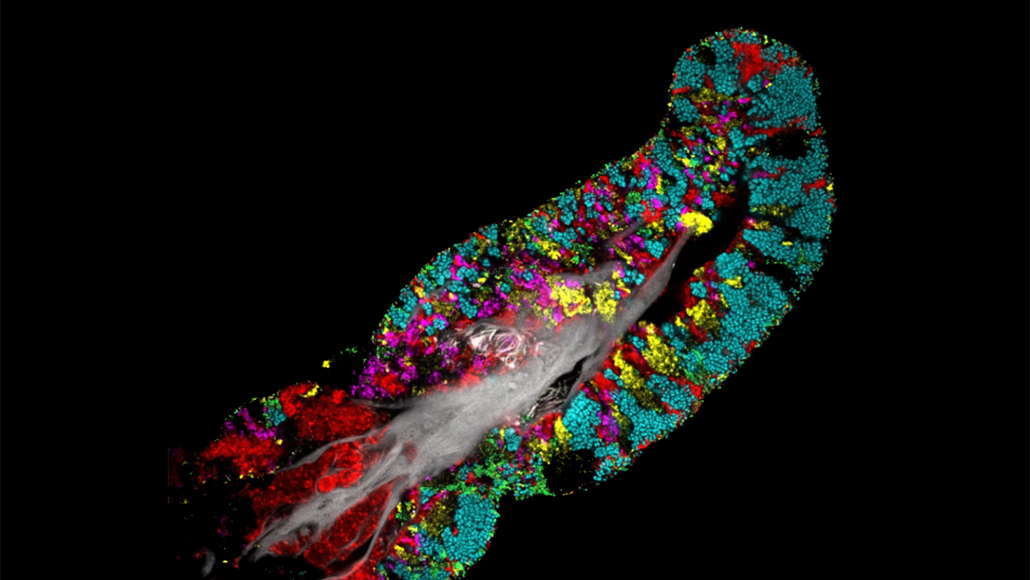Here’s where bacteria live on your tongue cells
Mapping how bacteria are grouped together may reveal how they maintain their environment

Tongue-dwelling bacteria (different types labeled with different colors) form a thick film around a human tongue cell (gray structure at center).
S. Wilbert et al/Cell Reports 2020
- More than 2 years ago
Read another version of this article at Science News Explores
Myriad microbes dwell on human tongues — and scientists have now gotten a glimpse at the neighborhoods that bacteria build for themselves.
Bacteria grow in thick films, with different types of microbes clustered in patches around individual cells on the tongue’s surface, researchers report online March 24 in Cell Reports. This pattern suggests individual bacterial cells first attach to the tongue cell’s surface and then grow in layers as they form larger clusters — creating miniature environments the different species need to thrive.
“It’s amazing, the complexity of the community that they build right there on your tongue,” says Jessica Mark Welch, a microbiologist at the Marine Biological Laboratory in Woods Hole, Mass.
Methods to identify microbial communities typically hunt for genetic fingerprints from various types of bacteria (SN: 11/05/09). The techniques can reveal what lives on the tongue, but not how the bacterial community is organized in space, Mark Welch says.
So she and her colleagues had people scrape the top of their tongues with plastic scrapers. Then the team tagged various types of bacteria in the tongue gunk with differently colored fluorescent markers to see how the microbial community was structured.
Bacterial cells, largely grouped by type in a thick, densely packed biofilm, covered each tongue surface cell. While the overall patchwork appearance of the microbial community was consistent among cells from different samples and people, the specific composition of bacteria varied, Mark Welch says.
But some bacteria were common across nearly all samples and tended to occupy roughly the same regions around tongue cells. Actinomyces bacteria, for example, were typically at the core of the structure, close to the human cell. Rothia, on the other hand,tended to exist in large patches toward the outside of the biofilm and Streptococcus formed a thin outer layer. Two of these groups — Actinomyces and Rothia — may be important for converting dietary nitrate, a compound abundant in leafy green vegetables, to nitric oxide, which dilates blood vessels and can help regulate blood pressure.


Knowing how different bacterial groups are spatially arranged on the tongue could help uncover how the microbes might work together to maintain their environments and keep their host healthy (SN: 2/18/16).







